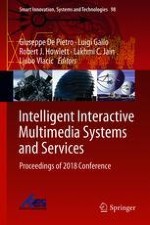This volume presents a series of carefully selected papers on the theme of Intelligent Interactive Multimedia Systems and Services (IIMSS-18), but also including contributions on Innovation in Medicine and Healthcare (InMed-18) and Smart Transportation Systems (STS-18). The papers were presented at the Smart Digital Futures 2018 multi-theme conference, which grouped the AMSTA, IDT, InMed, SEEL, STS and IIMSS conferences in one venue in Gold Coast, Australia in June 2018.
IIMSS-18 included sessions on 'Cognitive Systems and Big Data Analytics', 'Data Processing and Secure Systems', 'Innovative Information Services for Advanced Knowledge Activity', 'Autonomous System' and ' Image Processing'. InMed-18 papers cover major areas of 'Digital Architecture for Internet of Things, Big data, Cloud and Mobile IT in Healthcare' and 'Advanced ICT for Medical and Healthcare'. STS-18 papers provide a comprehensive overview of various aspects of current research into intelligent transportation technology.
